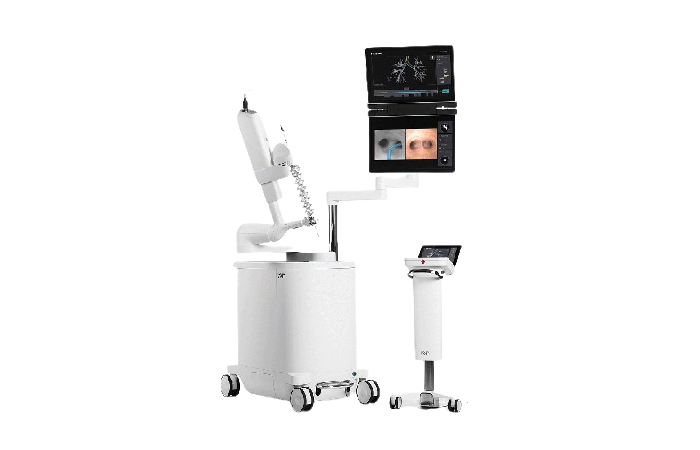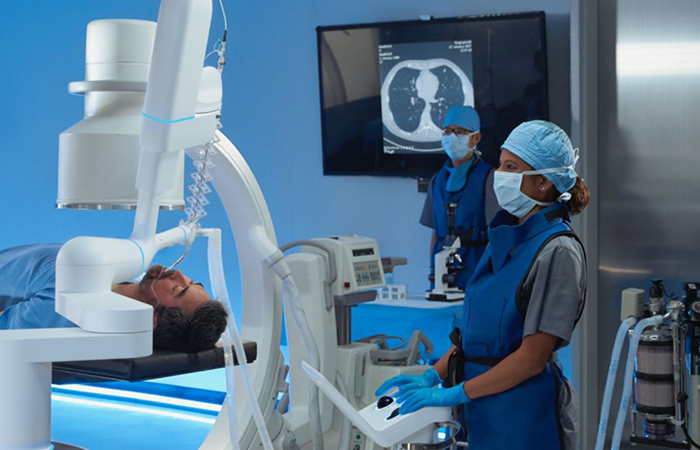If your physician found a spot on your lung, commonly called a nodule or small mass, he or she may recommend you have it checked out further. This test is called a lung biopsy. Fewer than 5% of nodules are actually cancer, but your doctor may recommend you find out for sure.
HSHS St. Elizabeth’s Hospital offers Ion bronchoscopy, a minimally invasive surgical procedure to perform lung biopsies. Ion bronchoscopy uses a robotic-assisted system to examine the lungs and obtain biopsies from hard-to-reach areas.
Overall, Ion bronchoscopy represents a significant advancement in pulmonary medicine, enhancing the ability to diagnose and treat lung diseases effectively.
Your doctor may recommend this procedure if there are suspicious nodules or lesions in your lungs that need further evaluation, especially if they are difficult to access with traditional bronchoscopy.


 During robotic-assisted bronchoscopy with Ion, your physician guides an ultra-thin catheter through your airway to the area of your lung for biopsy.
During robotic-assisted bronchoscopy with Ion, your physician guides an ultra-thin catheter through your airway to the area of your lung for biopsy.